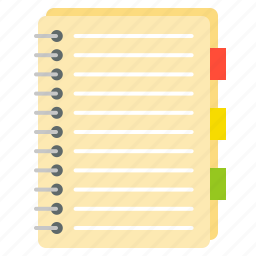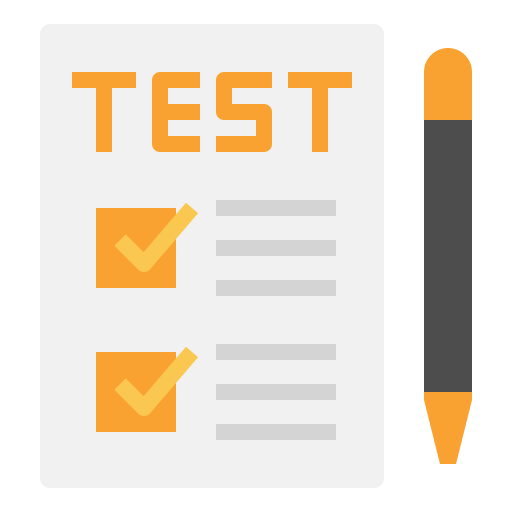Tripura Board Class 11 Syllabus for Biology
Tripura Board of Higher Secondary Education Class XI Syllabus for Biology with course structure are given below.
Unit I : Diversity of Living Organisms (25 Periods)
Diversity of living organisms
- What is living?
- Concept of biodiversity.
Classification of living organisms
- Need for classification.
- Three domains of life.
- Five kingdoms of life and basis of five kingdom.
- Classification.
- Lichens
- Virus and virioids.
Systematic and binomial nomenclature
- Taxonomy & Systematic.
- Concept of species and taxonomic hierarchy.
- Binomial nomenclature.
- Salient features and classification of Monera, Protoctista (Protista) and Fungi into major groups
- Salient features and classification of plants into major groups – Algae, Bryophytes, Pteridophytes, Gymnosperms and Angiosperms. Three to five salient and distinguishing features of each category and at least two examples of each.
- Angiosperms – classification upto class, characteristic features and examples.
- Salient features and classification of animals — Major non chordate phyla and chordate classes. Three to five salient features and at least two examples.
- Tools for study of biodiversity – Museums, Zoos, Herbaria, botanical gardens.
Unit II : Structural Organisation in Animals and Plants (25 Periods)
- Tissues in animals and plants.
- Morphology including modifications, microscopic anatomy and functions of different parts of flowering plants: Root, Stem, Leaf, Inflorescence, flower, fruit and seed. (To be dealt with along with the relevant practicals of the Practical Syllabus)
- Morphology, anatomy and functions of different systems (digestive, circulatory, respiratory, nervous and reproductive) of an insect (cockroach). (Brief account only)
UNIT III : Cell Structure and function (40 Periods)
- Cell and its three major parts —- cell membrane, cytoplasm, nucleus.
- Cell theory and cell as the basic unit of life.
- Structure of a prokaryotic and eukaryotic cell.
- Plant cell and animal cell. (Brief)
- Cell envelope, cell membrane, cell wall.
- Cell organelles — Structure and function : Mitochondria, golgi, endoplasmic reticulum, ribosomes, lysosomes, vacuoles, plastids, microbodies.
- Cytoskeleton, cilia, flagella, centrioles (Ultrastructure and function).
- Nucleus — nuclear membrane, chromatin, nucleolus.
- Chemical constituents of living cells.
- Biomolecules — Structure and function of proteins, carbohydrates, fats, nucleic acids.
- Enzymes — types, properties, enzyme action.
- Cell division — Cell cycle significance of, and differences between mitosis and meiosis.
UNIT IV : Plant Physiology (45 Periods)
Movement of water, food, nutrients and gases
- Absorption of water, gases and nutrients.
Cell to cell transport
- Diffusion, facilitated diffusion, active transport.
Plant – water relations
- Imbibition, water potential, osmosis, plasmolysis.
Long distance transport
- Apoplast, symplast, root pressure, transpiration pull.
Transpiration and Guttation
- Opening and closing of stomata
- Role of K+ ions.
Uptake of mineral ions and their translocation
- Transport through xylem and phloem.
Plants and mineral nutrition
- Essential minerals, macro-and micronutrients and their role.
- Deficiency symptoms.
- Mineral toxicity.
- Elementary idea of Hydroponics as a Method to study mineral nutrition.
- Nitrogen metabolism — Nitrogen cycle, biological nitrogen fixation.
Plant Respiration
- Exchange of gases.
- Cellular respiration — glycolysis , fermentation (anaerobic), TCA cycle and electron transport system (aerobic).
- Energy relations – Number of ATP molecules generated.
- Amphibiotic pathways.
- Respiratory quotient of nutrients.
Photosynthesis
- Autotrophic nutrition.
- Site of Photosynthesis.
- Photosynthetic pigments (Elementary idea).
- Photochemical and biosynthetic phases of photosynthesis.
- Cyclic and non cyclic photophosphorylation.
- Chemiosmotic hypothesis
- Photorespiration.
- C and C pathways.
- Factors affecting photosynthesis.
- Law of limiting factors.
Plant growth and development
- Phases of plant growth and plant growth rate.
- Conditions of growth.
- Differentiation, dedifferentiation and redifferentiation.
- Sequence of developmental process in a plant cell.
- Growth regulators-auxin, gibberellin, cytokinin, ethylene, ABA.
- Photo morphogenesis including brief account of phytochromes. (Elementary Idea)
- Seed germination.
- Seed dormancy.
- Vernalisation.
- Photoperiodism.
Unit V : Human Physiology (45 Periods)
Digestion and Absorption
- Human alimentary canal and Digestive glands.
- Role of digestive enzymes and gastrointestinal hormones.
- Peristalsis.
- Digestion, absorption and assimilation of proteins, carbohydrates and fats.
- Calorific value of proteins, carbohydrates and fats.
- Egestion.
- Nutritional and digestive disorders — P E M, indigestion, constipation, vomiting, jaundice.
Breathing and Respiration
- Respiratory organs in animals. (Recall only)
- Respiratory system in humans.
- Mechanism of Breathing and its regulation in humans.
- Exchange of gases, transport of gases and regulation of respiration in humans.
- Respiratory volumes.
- Disorders related to respiration – Asthma, Emphysema, Occupational Respiratory disorders.
Body fluids and circulation
- Composition of blood, Blood groups, coagulation of blood.
- Composition of Lymph and its function.
- Human circulatory system.
- Structure of human heart and blood vessels.
- Cardiac cycle, Cardiac output, ECG.
- Double circulation.
- Regulation of cardiac activity.
- Disorders of circulatory system – Hypertension, Coronary artery disease, Angina pectoris, heart failure.
Excretory products and their elimination
- Modes of excretion – Ammonotelism, ureotelism, uricotelism.
- Human excretory system-structure and function.
- Urine formation, Osmoregulation.
- Regulation of kidney function, Renin-angiotensin, Antinatriuretic factor, ADH and Diabetes insipidus.
- Role of other organs in excretion.
- Disorders — Uraemia, Renal failure, Renal Calculi, Nephritis.
- Dialysis and artificial kidney.
Locomotion and Movement
- Types of movement — ciliary, flagellar, muscular.
- Skeletal muscle — contractile proteins and muscle contraction.
- Skeletal system and its functions. (To be dealt with the relevant practical of Practical Syllabus).
- Joints.
- Disorders of muscular and skeletal system – Myasthenia gravis, Tetany, Muscular dystrophy, Arthritis, Osteoporosis Gout.
Neural control and coordination
- Neuron and nerves.
- Nervous system in humans.
- Central Nervous system, Peripheral Nervous system and Visceral Nervous system.
- Generation and conduction of nerve impulse.
- Reflex action.
- Sense organs.
- Sensory Perception.
- Elementary structure and function of eye and ear and general idea of other sense organs.
Chemical coordination and regulation
- Endocrine glands and hormones.
- Human endocrine system – Hypothalamus, Pituitary, Pineal, Thyroid, Parathyroid, Adrenal, Pancreas, Gonads.
- Mechanism of hormone action (Elementary Idea).
- Role of hormones as messengers and regulators.
- Hypo and hyperactivity and related disorders.
- (Common disorders e.g. Dwarfism, Acromegaly, Cretinism, goiter, exopthalmic goiter, diabetes, Addison’s disease).
IMP : Diseases related to all the human physiology systems to be taught in brief.
PRACTICAL
List of Experiments
A. Description of locally available flowering plants
1. Study and describe three locally available common flowering plants from each of the following families (Solanaceae, Fabaceae and Liliaceae) including dissection and display of floral whorls and anther and ovary to show number of chambers. Types of root (Tap and Adventitious) : Stem (Herbaceous and woody) : Leaf (arrangement, shape, venation, simple and compound).
B. Physiology Experiment
1. Study of osmosis by potato osmometer.
2. Comparative study of the rates of transpiration in the upper and lower surface of leaves ( demonstration only).
3. Test for the presence of sugar (glucose) , starch, proteins and fats. To detect them in suitable plant and animal materials.
4. Separation of plant pigments through paper chromatography.
5. To test the presence of urea in urine.
6. To detect the presence of sugar in urine.
7. To detect the presence of albumin in urine.
C. Slide preparation
1. Preparation and study of T.S. of dicot and monocot roots and stems (primary).
2. Study of plasmolysis in epidermal peels (e.f. Rhoeo leaves).
3. Study of distribution of stomata in the upper and lower surface of leaves.
D. Spotting
1. One lower plant/Algae.
2. One vertebrate/Invertebrate.
3. One plant tissue/animal tissue.
4. One stage of mitosis.
5. One experimental setup.
6. One inflorescence.
7. One modified root/stem/leaf.
8. Bones/joints of human skeleton.
9. External morphology of cockroach.
You can also check here:




















Comments